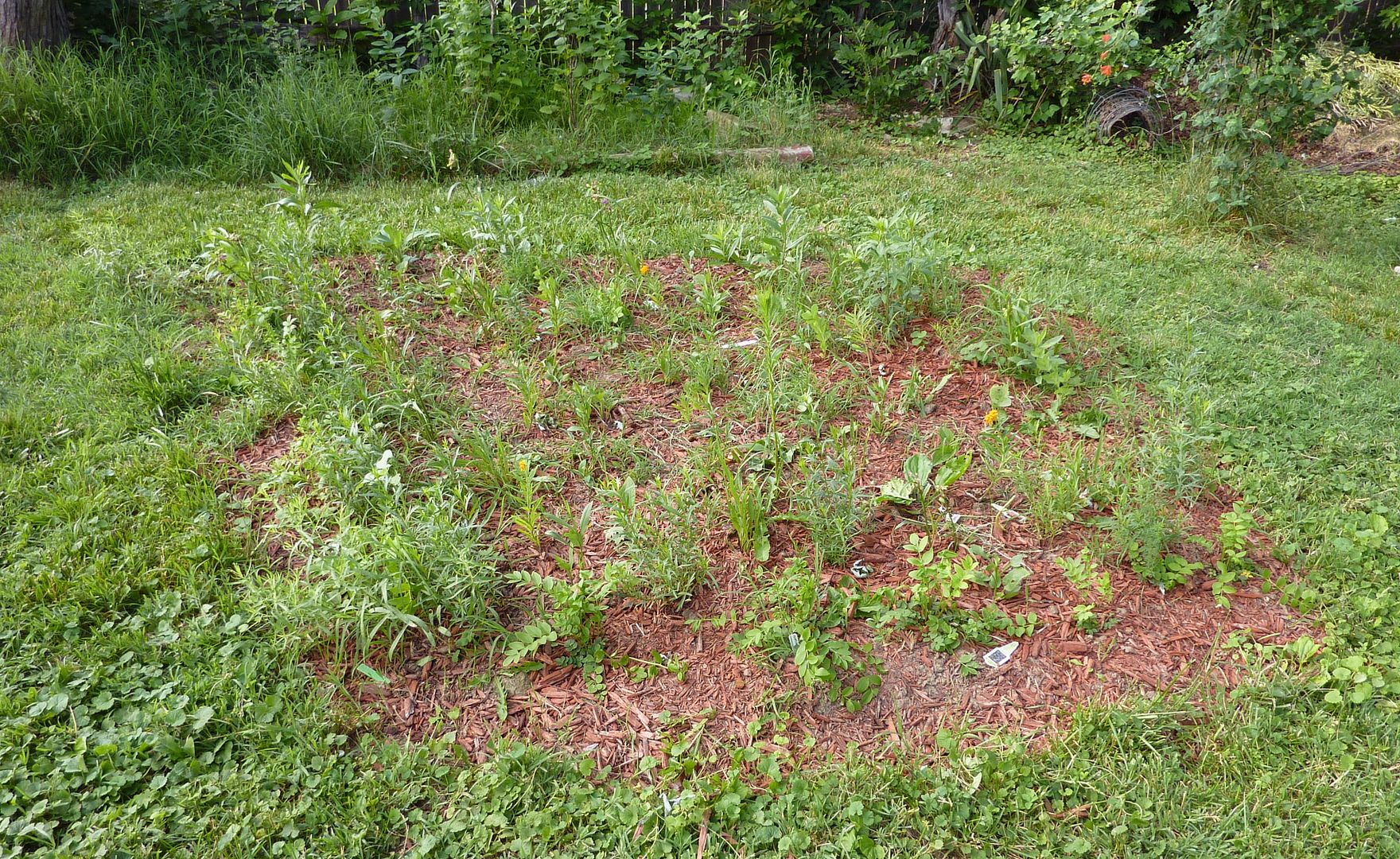So the prairie garden is still establishing itself. Some of the Jacob's Ladder, Milkweed, and Western Spiderwort are already flowering in moderation. Next year these should produce quite an effect with the hot color each of their flowers possesses. I'm not a fan of grasses, least of all the grass that used to be there. Other than laying down mulch I didn't take any time to get rid of the grass, though I did turn the soil before hand. The mulch is making the weeding so much easier. All the desired species stand out and the undesired grass can't lay down any runners.
I've planted everything about 1' apart regardless of size. My logic here is this is how it would be out in a real prairie and the dense foliage will help control anything unwanted from encroaching in. Mowing it each March should help get rid of the bramble.
Species include:
Tall Coreopsis, Coreopsis tripteris. This was for a wow factor, as in wow that coreopsis is 8' tall!
Laceleaf Coreopsis, Coreopsis lanceolata.
Stiff Coreopsis, Coreopsis palmata.
Western Spiderwort, Tradescantia occidentalis. I hear spiderwort is hard to get rid of once established. Considering how pretty the flower is I don't think I'll mind.
Butterfly Weed, Asclepias tuberosa. How dare any gardener in North America have a shortage of this plant in their garden! If I can find a nursery selling Purple Milkweed, Asclepias purpurascens, in abundance I should plant these two species together in mass.
Showy Goldenrod, Solidago speciosa. A bit of a thug from my understanding, really I planted this just to round out the number of Solidago species I have in the yard. The brilliant yellow flowers go great with any species of Aster.
Blue Star, Amsonia ciliata. Unlike other Amsonia species these have slightly bigger flowers. A downside though is that they get considerably bigger than I originally though. I saw one at a nursery and the thing was a fair sized bush. So I may divide or transplant this out eventually, but I'm glad I finally got some of these going in the garden.
Blue False Indigo, Baptisia australis. This is another plant that gets to big for it's own good. The flowers and seed pods are decorative. These will stick up above shorter species and add some height to the corners.
Purple Prairie Clover, Dalea purpurea. These plants balance their own nitrogen and should overall benefit the garden. I was sure to spread them out, which was easy as they're fairly compact little things.
Jacob's Ladder, Polemonium reptans. I was at a nursery earlier today and saw they were selling 3 cultivars of this plant but somehow failed to stock the true species. It seems as though plants have to have damaged leaf color, or triple flowers
Ozark Coneflower, Echinacea paradoxa. For whatever reason there are cultivars of other coneflowers that are yellow, which begs the question why people aren't just planting the yellow species of coneflower.
Orange Coneflower, Rudbeckia fulgida. This is a coneflower that almost mimics a Black Eye'd Susan. I've never grown it before so this should be interesting.
Meadow Liatris, Liatris ligulistylis. I should have probably tried out some more indigenous species of Liatris but I've always had success with these and Monarchs.
Aromatic Aster, Symphyotrichum oblongifolium.
Sky Blue Aster, Symphyotrichum oolentangiense (formerly Aster azureus).
Smooth Blue Aster, Symphyotrichum laeve.
All of these Asters have a variety of blues and lavender colors that should really brighten up the garden come fall.
So I'm hoping a lot of these plants survive the winter. One can never be certain. Replacement plantings will depend on what died and where it was in the prairie.
